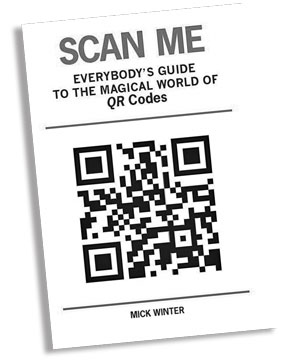What's now media!
By Prof. Tara BRABAZON
New media is not only a phrase to describe digital innovation. It is
a social weapon to repress also, undermine and upset. It is meant to
make us feel unsettled, like we have missed something.
 All old media were once new. By the time most software and hardware
is marketed and mainstreamed, it is already obsolete. The moment that
Apple'siPad 1 was released, podcasts, vodcasts and blogs were calling
for its replacement. This arrived within the year. All old media were once new. By the time most software and hardware
is marketed and mainstreamed, it is already obsolete. The moment that
Apple'siPad 1 was released, podcasts, vodcasts and blogs were calling
for its replacement. This arrived within the year.
I have little use for phrases such as 'new media' or its more ageist
adversary, 'old media.' Instead, I am interested in Now Media. For me,
Now Media describes platforms which are useful, which can hook into our
daily lives and improve our experiences of cities, culture and
education. For me, a great example of Now Media is QR Codes. Short for
Quick Response codes, they were created in 1994 by Denso, a subsidiary
company of Toyota.
Smartphones
They are able to hold more data than a conventional barcode, can be
read by smartphones and enable users to scan a QR code and - in a real
time and a real place - find online information that resonates with
their physical context. They can be used on business cards, public art,
magazines, menus, food packaging and wine bottles. As old media, they
have extraordinary uses in our present. They are 'Now Media.'
A fine book has recently been released about QR Codes by Mick Winter.
Based in the Napa Valley in California, his Scan Me: Everybody's guide
to the magical world of QR codes provides a guide to their use.
For this article in Montage, I spoke with Mick Winter about his book
and the potential of QR Codes for Sri Lankan education, culture and
business.
Question: What drew you to write a
book on QR Codes?
Answer: I wrote one
because there wasn't one already. As part of a graduate school project,
I was researching the awareness of QR codes in my community, the Napa
Valley in California. I also hoped to make key people and organisations
in the community aware of the benefits of using QR codes. So I created
QR codes for businesses, local government and non-profit organisations,
then printed out small posters that they could put in their windows for
passers-by to see.
 I explained to the businesses the value of QR Codes. Some people
understood, some didn't get it at all, and many said-after I
demonstrated how to use them-"I understand, but how can I use them?" So
I looked for a book on QR Codes that I could recommend. Not only did I
not find a good QR Code book, I didn't find any books at all. So I wrote
one. I explained to the businesses the value of QR Codes. Some people
understood, some didn't get it at all, and many said-after I
demonstrated how to use them-"I understand, but how can I use them?" So
I looked for a book on QR Codes that I could recommend. Not only did I
not find a good QR Code book, I didn't find any books at all. So I wrote
one.
Q:Why do you think that, although
they were invented in 1994, they are gaining increasing use right now?
Economy
A: Perhaps they're
starting to be used more now because of the economy. At any time, but
particularly in a bad economy, businesses are always looking for
something that will give them an edge over the competition, or that will
catch the public's eye in a new way. Actually North America, where I
live, is way behind. Europe is also. I can't speak for South Asia but I
do know that in Japan, where they were invented, they have been
extremely popular for years. As they are in South Korea. So we in the
West are just slow. But they're here.
Another reason, of course, is that more and more people have mobile
phones, and now camera phones, which is what they need to scan QR Codes.
There are about 1.5 billion personal computers in the world and for 5
billion mobile phones. For the majority of people on the planet, the
mobile phone is, and will be, their only connection to the Internet. QR
Codes can be an important way of connecting with those people.
QR Codes aren't so much a new medium in themselves, as a new way of
linking to media. I see them as kind of a digital flying carpet that can
take us anywhere on the Internet. A portal to a magical, unseen world. I
predict that not long in the future, they'll be widely used throughout
the world. So much so, that they're just another tool in the media
basket.
Q:What value could QR Codes hold for
Sri Lankan small and medium-sized businesses?
A:I can't answer that in a
truly localised way. But the value I'm aware of in both Japan and the US
is likely shared by most other countries. In short, QR Codes can provide
information to people who are not actually at the location of a
business, or who need information not easily accessible at the business.
For example, QR Codes in a store window can give people information
even when the business is closed, such as information on special sales,
or positive reviews from other customers. Inside the store, QR Codes
next to products can lead to videos showing how those products are used.
QR Codes in newspapers and magazines, on flyers, posters or billboards,
can attract customers who may have never even heard of a particular
business but are intrigued by what they see through the QR Code.
QR Codes
QR Codes have to be used properly, however. One of the first
businesses I persuaded to put a poster in their window was a restaurant.
One of the QR Codes on the poster linked to their menu. The owner then
pointed out that if they were standing in front of his restaurant, they
didn't need to use a QR Code to see it.
The menu itself was in the window. He was right. That made it very
clear to me what many businesses in the US don't yet understand. Don't
use QR Codes for information that people can obtain in an easier way.
Another caution is that if you're using a QR Code to link to a website,
make sure that that website has been designed to be mobile-friendly. If
people can't see the website easily on their phone's screen, they'll
immediately lose attention, and their time and yours will have been
wasted.
Remember that QR Codes are for mobile phones. The key is mobile.
People are on the move. They want useful information that will help them
decide where to go or what to buy, such as movie trailers, or restaurant
and product reviews; to learn something specific at their location, such
as information on a building or home for rent or sale; or to get further
information about a newspaper advertisement or news item. QR Codes also
deliver audio, video, automatic phone calling, and text messaging. They
enable people to register for contests sponsored by businesses, order
tickets for an event, receive a coupon or news about a special sale. The
codes are a media tool that leads to other media.
Q:What are the benefits of QR Codes
to public institutions and public art in particular?
A:They're perfect for
museums, art galleries, zoos, and any kind of tourist attraction. They
can replace the headphones and receivers used in many of those
locations. With a small QR Code displayed at each exhibit, visitors
simply have to scan the code to hear information about what they're
seeing or a talk by the artist about his or her work.
They're convenient for the visitors, most of whom already have
Internet-connected mobile phones, and the museum or gallery doesn't have
to deal with the time and cost of renting, cleaning and maintaining the
equipment.
For public art, there's an example in the city of Napa, where I live.
We have an exhibit of sculptures scattered throughout the downtown area
on sidewalks and in parks. Each art work has a small QR Code mounted
near it. People viewing the sculpture can simply scan the code to hear a
message from the artist. The exhibit's organisers also produce a free
(and downloadable) brochure which has a QR Code next to each artist's
listing.
So when tourists go back home, they can still hear the artists
talking and, if video is used, see other examples of the artists' work.
Another interesting use is for self-guided tours through towns or other
special areas of interest.
QR Codes can provide information about historic buildings, past
events at particular locations, even plants and wildlife. If it's not
possible for people to actually enter an historic, government or
otherwise closed building, a QR Code can lead them to a video tour of
that building's interior. All of these codes can be placed in specific
locations or they can be on printed maps that visitors can follow.
Q:What role can QR Codes hold for
schools, universities and education more generally?
A:In the primary grades
they can be used for learning games such as treasure hunts, leading
young children from place to place through hints and clues. In secondary
school, they can link from printed handouts to external information such
as websites, videos and podcasts.
They can also lessen printing costs and the need to update textbooks
and course materials as students can go directly to online sources of
the material. Students can create their own QR Codes to use in projects.
They can also be used at any educational level to identify students on
tests, so that there is no name bias in evaluations.
Assignment
In higher education particularly, QR Codes can be included on syllabi
and assignment sheets to link to full-text information in academic
journals, or to websites, videos and other material relevant to a
course. In language study, QR Codes can link to websites and articles in
both the language being learned and the student's native language. This
is also valuable for international students, who can easily access
translations when necessary.
Q:What do you hope is the outcome
from your book Scan Me?
A: I hope it will
encourage all types of organizations and even individuals to use QR
Codes. They can be used for an unlimited number of purposes to
communicate all types of information.
And, they can be fun. One of the best features is that they're easy
to make. They're also free to make. You can find websites that let you
create QR Codes just by searching the Internet. I have some of the best
of those websites listed in my book.
QR Codes are far more than just another advertising or sales tool. If
the Internet can bring the entire world to your mobile phone, a QR Code
narrows that world down to very specific pre-established information.
They're for someone to communicate very specific information to
someone else. They're useful, enjoyable, and interesting for the person
who scans the codes, and productive and beneficial for the person or
business that made them. That's a lot of value in a little square.
Mick Winter's book Scan Me: Everybody's Guide to the Magical World of
QR Codes is available from Amazon in both a print and Kindle edition.
[email protected] |

